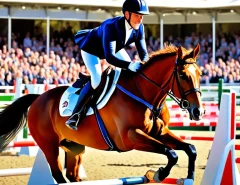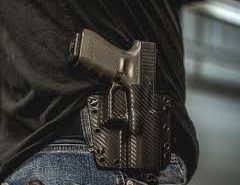What Are Horse Jump Cups?
Horse jump cups are indispensable elements in equestrian sports, and they are used explicitly in show jumping and cross-country events. These cups are designed to securely hold the poles in place on jumps, allowing for adjustable heights based on training needs or competition levels. Correctly understanding and utilizing horse jump cups can significantly enhance training outcomes, improve safety protocols, and contribute to the well-being of both horse and rider. Jump cups are pivotal in creating a versatile and safe jumping arena, accommodating various difficulty levels.
Types of Horse Jump Cups
Several types of horse jump cups are available, each designed for different purposes and featuring variations in materials, design, and usability. The three main categories include standard depth, safety, and breakaway cups.
- Standard Depth Cups: These cups are ideal for everyday training sessions. They offer a firm hold on the poles, making them well-suited for routine practice in training arenas. They are typically the most cost-effective option but might pose a higher risk during high-impact jumps.
- Safety Cups: Safety cups are designed with a mechanism that allows the poles to fall away easily upon impact. This design reduces the risk of injury to the horse if it happens to strike the jump. Such cups are highly recommended for novice and experienced riders, prioritizing the horse’s well-being.
- Breakaway Cups: Engineered to break apart upon impact, these cups enhance safety. They are generally used in higher-level competitions with more significant risks associated with high jumps. Despite being more expensive, their safety benefits make them an invaluable investment.
Materials Used in Horse Jump Cups
Horse jump cups are constructed from various materials, each offering distinct advantages and disadvantages regarding durability, cost, and safety. Common materials include plastic, metal, and composite materials. Plastic cups are lightweight and resistant to rust but may crack over time. Metal cups are highly durable but can rust, requiring regular maintenance. Composite materials provide a blend of strength and protection. Choosing the most suitable option relies on the specific requirements and circumstances, emphasizing the significance of picking materials that align with your training setting.
Safety Considerations
When selecting horse jump cups, it is essential to prioritize safety. Features such as rounded edges, breakaway designs, and durable materials are essential in ensuring both the horse’s and rider’s safety. Breakaway cups that comply with safety standards can significantly minimize the risks associated with high-impact jumps. Routine checks for signs of damage, like fractures or corrosion, are essential to ensure the durability and security of the jump cups. Additionally, jump cups’ strategic placement and height adjustments can prevent accidents and promote a safer training environment.
How to Choose the Right Horse Jump Cups
Choosing the right horse jump cups involves considering various factors, such as the level of schooling required, the type of events you participate in, and your horse’s physical condition. Consulting resources can provide valuable guidance in making an informed decision. Factors to consider include:
- Training Level: Standard-depth cups are generally sufficient for novice riders. Advanced riders or those training for competitions may benefit more from safety or breakaway cups, which provide an added security layer.
- Event Type: The events you participate in, such as show jumping or cross-country, may require different jump cups to meet specific event requirements.
- Horse’s Condition: Your horse’s physical condition and temperament are crucial in selecting jump cups. Younger or more energetic horses may require safer breakaway options to mitigate risks.
Maintaining Your Horse Jump Cups
Proper maintenance ensures safety and performance and extends the lifespan of your horse jump cups. Regular check-ups are necessary to detect signs of deterioration, like fractures, corrosion, or other types of harm. Cleaning the cups regularly to remove dirt and debris helps maintain their functionality and appearance. Additionally, storing the cups in a dry, sheltered area when not in use can prevent weather-related damage and prolong their lifespan.
Frequently Asked Questions
- What is the difference between standard-depth and safety cups? Standard-depth cups hold the poles firmly in place, making them suitable for everyday training. Safety cups, however, have a design that allows the poles to fall away easily upon impact.
- How often should I replace my horse jump cups? The replacement frequency largely depends on usage and material. Metal cups may rust over time, while plastic cups could crack. Regular inspections and timely replacements are recommended to ensure safety.
- Are breakaway cups mandatory in competitions? Many competitions now recommend or require breakaway cups to enhance safety. Always review the particular regulations of the contest you are participating in to guarantee adherence to safety protocols.
Concluding Thoughts
Investing in the right horse jump cups can substantially impact your equestrian training routine. Prioritizing safety, durability, and suitability ensures that you and your horse can train effectively and securely. Considering the different types of jump cups, materials, and safety features can help create a safer and more productive training environment. Remember, regular maintenance and proactive safety measures are essential to reaping the full benefits of your horse jump cups.





Leave a Reply